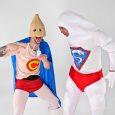Overview
Pubic pediculosis is a parasitic infestation caused by the louse Pthirus pubis, also called crabs. It is considered a sexually transmitted disease and it is estimated that approximately 30% of infected people suffer from other sexually transmitted diseases.
The louse invades the hair of the pubic region and causes intense and intermittent itching. This disease is more common in men and is favored by poor hygiene conditions. The prevalence of this disease is higher in underdeveloped countries.
Epidemiology
This type of pediculosis is almost exclusive to adults and is acquired in most cases by sexual contact and, occasionally, by objects or clothing contaminated with parasites.
Disclaimer: condom-sizes.org is supported by its readers. When you buy through links on our site, we may earn an affiliate commission. Learn more.
Unlike the lice responsible for the body pediculosis (Pediculus corporis), capable of transmitting the epidemic exanthematous typhus produced by Rickettsia prowazekii, the trench fever, produced by Rickettsia rochalimae and the recurrent fever, produced by Borrelia recurrens, the Pthirus pubis does not transmit these diseases (1).
The prevalence of pubic pediculosis has been linked to the sexual habits of society, as well as overcrowded conditions, poor hygiene and shared use of toilets. In the 60s an increase of this disease was evidenced in patients who used oral contraceptives.
A study conducted in Nigeria showed that there is a statistically significant relationship between HIV infection and P. pubis infestation in female sex workers in this region, which led to the hypothesis that these parasites could behave as mechanical vectors of HIV (2). In Europe and America, a correlation between this disease and HIV has not been demonstrated.
Pubic Lice Symptoms
After contamination with the parasite, there is an asymptomatic period of approximately thirty days. In general, the patient rarely has more than 10 lice. The bite of the louse is painless; but due to an allergic reaction to saliva or to the anticoagulant that injects the parasite, the skin develops an inflammatory reaction that causes irritation (3).
The main symptom is itching that is very intense. Therefore, it is common to find secondary lesions by scratching such as lichenification or impetiginization.
The skin adjacent to the bite, especially when it occurs in the thighs, or in the lower abdomen, may have a bluish tinge, called macule cerulean, which is produced by the action of the insect’s saliva on the blood spilled on the skin dermis (4). In the underwear, black spots are usually found, resulting from the digested blood and evacuated in the form of excrement by the parasite.
The differential diagnosis includes tinea, folliculitis, eczema, melanocytic nevus, ashen dermatitis, erythrasma, and scabies. The direct examination, with a magnifying glass or with a microscope, clearly shows the nits and lice.
Diagnosis
Lice and nits can be easily identified with a magnifying glass or microscope. In addition, the doctor can identify them better by placing a lantern that illuminates the pubic hair laterally. Hair samples for laboratory examination can be sent fresh or preserved in 75% ethanol.
Treatment
Ideally, the medication should be able to eliminate eggs and lice. In general, the eggs are more resistant, so some treatments must be repeated 7 days after the initial application when the nymphs hatch from the nits.
DDT was successfully used at 2% and 10%, but the development of insecticide resistance and the deleterious effect of insecticide on nature caused its use to be abolished.
Another form of management is with gamma benzene or lindane, prepared as shampoo, cream or 1% lotion. After bathing with a regular shampoo, dry the hair well and apply an ounce of gamma-benzene shampoo, it should be well spread and left to act for 4 minutes, after which water is added to make abundant lather, subsequently, it should be removed with plenty of water.
The gamma-benzene is absorbed through the skin, however, the low doses used and the short time of exposure prevents the development of intoxications.
However, it should not be used in patients with a history of seizures or in children under 2 years of age. The use of water and vinegar in equal parts helps to soften the cement that binds the nit to the hair and its removal is facilitated with a fine comb.
Pyrethrins (KwellB-ChitosoB) are presented as a 0.3% emulsion or as a 10% shampoo. They are used in the same way as gamma-benzene and have given excellent results without toxic effects.
Malathion in 0.5% lotion is perhaps the best medication for all lice, however, obtaining it is not easy because it is a toxic organophosphate. Petrolatum is useful in the elimination of the parasite (3).
Ivermectin is an effective ovicide and parasiticide with a wide range of activities. This medication is taken as a single dose of two pills, with the option of taking another dose after 10 days if the initial treatment did not work.
Several studies have shown that ivermectin causes the healing of 97% of patients infected with a single oral dose (100-200 ng/kg), only 3% of patients require a second dose for total healing. (5).
In many cases the fear of parasitosis can lead to excessive use of the indicated therapy, causing dermatitis that arrives can cause more discomfort than the parasitosis itself.
It is important to keep in mind that sexual partners should be treated simultaneously and in the same way. It is recommended to wash clothes with hot water. Lice eggs are destroyed when exposed to temperatures above 55ºC for more than 5 minutes while the adult louse must be exposed to 60ºC for at least 15 minutes to be destroyed.
References
- Ackerman EA. Crabs. The resurgence of Pihirus pubis. N Engl J Med 1968;278(17):950-1
- lmandeh NA. Prevalence of Pthims pubis among sex workers in urban Jos, Nigeria. Appl Parasitoi 1993; 34(4):275-7.
- Elgart ML. Pediculosis. Dermatologic Clin 1990;8:219-28.
- Sutton RL, Sutton RL Jr. Diseases of the skin. Tenth edition. St Louis: The CV Mosby Co.; 1939.
- Victoria J, Aumada NS, González FG. Pediculosis: Treatment of one hundred children with ivermectin. Act Terap Dermatol 1997;20:99-103.






 Helly Bartolomé Hernández Marin is a medical doctor graduated with honorific mention (cumlaude) from the “Universidad de Oriente”, one of the most prestigious universities in Venezuela, where he worked for 2 years as a professor of physiopathology, medical physiology and neuroanatomy.
Helly Bartolomé Hernández Marin is a medical doctor graduated with honorific mention (cumlaude) from the “Universidad de Oriente”, one of the most prestigious universities in Venezuela, where he worked for 2 years as a professor of physiopathology, medical physiology and neuroanatomy.